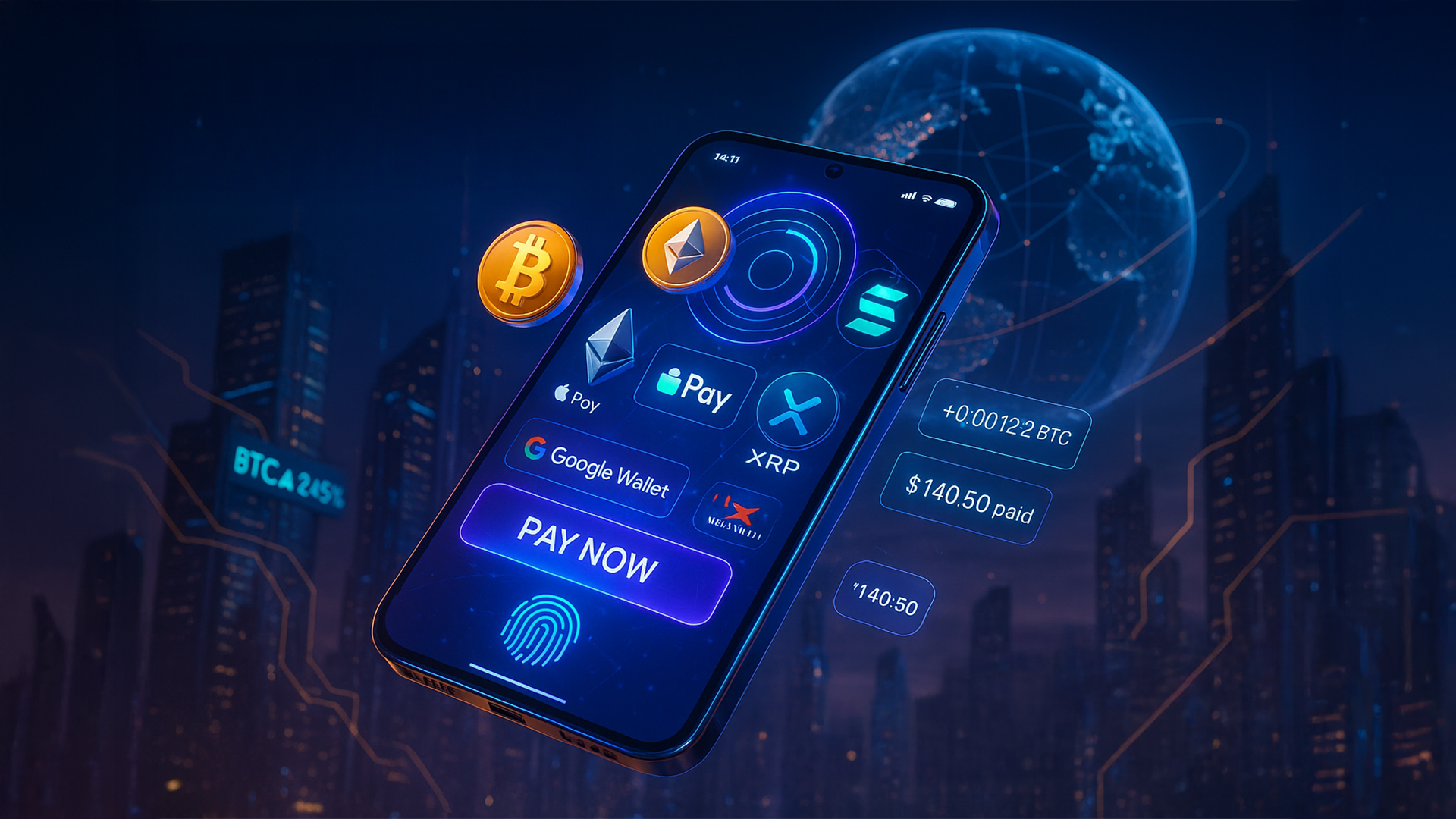Today, we live in a world powered by financial technology, mobile apps are evolving from mere convenience tools to powerful platforms managing digital assets, processing real-time payments, and even transforming how we interact with money globally. The lines between physical wallets, bank cards, and cryptocurrencies are becoming blurry, and at the center of this digital revolution is the digital wallet.
But this isn’t your grandpa’s checkbook-style wallet. Today, we’re talking about innovative wallets with built-in crypto virtual card support, decentralized encryption, and multi-currency capabilities embedded within your favorite apps.
What’s driving this seismic shift in how we pay, earn, and save? Let’s decode the future of digital wallets and how apps are integrating crypto to redefine the future of online payment.
How Mobile Apps Are Redefining Digital Payments?
Modern mobile apps are reshaping businesses; they no longer just offer basic wallet services. They’re becoming digital wallet solutions that allow users to hold, send, and receive crypto and fiat seamlessly. This shift is part of a broader transformation where developers are embedding crypto wallets directly into the app interface, which is supported by APIs and blockchain protocols that simplify onboarding and compliance.
Users get a sleek UI. That’s why there’s an encrypted digital wallet that comes into the picture with biometric security, KYC features, and zero-knowledge proofs.
The Rise of Borderless Finance
One of the biggest pain points in traditional finance has always been cross-border payments. High fees, currency conversions, delays, all of it’s outdated.
With the rise of crypto and digital wallets, payment solutions are becoming more popular among users. Stable coins now allow digital assets payments that settle in seconds, with minimal transaction costs, irrespective of geography.
Businesses, especially those shifting their operations online, are also adopting digital wallets for business to unlock new access points across borders.
Behind the Tech: Digital Wallet Innovations
So, what comes under today’s most advanced wallets?
We’re seeing a blend of digital wallet technology and AI, machine learning for fraud detection, and blockchain for transparency. This ensures mobile app security, compliance, and scalability.
From programmable smart contracts to real-time payment APIs, apps today are no longer asking, “Can we integrate a wallet?” They’re asking, “How deeply can we integrate financial intelligence into every user touchpoint?”
And users love it.
Business Use Cases: Not Just for Consumers
It’s not just users tapping to pay for coffee anymore. Enterprises are leveraging digital wallet development for payroll automation, vendor payments, and even NFT transactions.
A customized digital wallet for business enables advanced features like tiered access, audit trails, and asset tokenization, making treasury management smarter and faster.
As digital wallet growth accelerates, industries from retail to real estate are embedding wallet tech to accept digital asset payments and manage high-volume transactions effortlessly.
Types of Digital Wallets: A Quick Recap
There are several types:
- Closed wallets (only work with one brand)
- Semi-closed wallets (work with multiple merchants)
- Open wallets (full banking + crypto capabilities)
- Crypto-only wallets (for decentralized finance enthusiasts)
Each comes with specific digital wallet benefits, from transaction speed and security to financial inclusion and better budgeting tools.
What’s Next?
Expect smarter wallets that manage budgets, auto-swap currencies, detect fraud, and allow payments via voice, wearables, and even AR. Think of your digital wallet innovations as your future financial assistant that always learning and improving.
As consumer trust grows and regulation becomes more defined, digital wallet adoption will likely overtake card-based payments by 2030.
Final Words
The future of digital wallets isn’t coming. It’s already here and also evolving with every update, every tap, every transaction. For businesses and users alike, embracing this technology has become a necessity because it’s a step toward financial empowerment. If you are also looking to leverage such technologies into your app, you can partner with recognized mobile app development companies. They will provide you with a complete roadmap and will take your app towards success.
Frequently Asked Questions
Q1. What trends are driving the future of mobile and online payments?
Key trends include crypto adoption, decentralized finance, biometric security, AI integration, and real-time cross-border payments.
Q2. How are modern apps integrating cryptocurrency into digital payment systems?
Apps are embedding APIs and blockchain protocols that support crypto storage, transactions, and conversion into fiat, all within a secure, user-friendly interface.
Q3. What are the advantages of using digital wallets that support crypto?
They offer faster transactions, lower fees (especially for international transfers), and access to decentralized finance tools that enhance financial freedom.
Q4. Are crypto payments secure for everyday transactions through apps?
Yes. Thanks to encryption, biometrics, and real-time fraud detection, most crypto wallets today are highly secure for everyday use.
Q5. What is the future of crypto and digital wallets in mobile payment technology?
Expect full financial ecosystems within a single app, handling fiat, crypto, savings, lending, and even investments in one innovative wallet.
